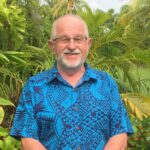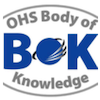Chapter 7: The Human - As a Biological System
Abstract
To be able to provide appropriate advice on the effects of hazards on workers’ health and to
competently assess the potential impacts of changes in the workplace, the generalist OHS
professional requires a working knowledge of the physiology of the human body including
the systemic interactions that may impact on the body’s response to environmental
exposures. After a brief history of the association of workplace exposures with worker health
and wellbeing, this chapter presents an overview of the biological systems of the human
body. Four case studies – featuring the nervous system, the integumentary system, the
reproductive system, and the interaction between exposure to psychosocial hazards and
multiple biological systems – provide examples of the application of physiological knowledge
in the OHS context.
Keywords: system, nervous system, respiratory system, endocrine system, reproductive system,
digestive system, skin, musculoskeletal
First year of publication: 2012
Current Version: 2021
Chapter 7: The Human - As a biological system
Table of contents
| 1 | Introduction |
| 2 | Historical perspective |
| 3 | Biological systems of the body |
| 4 | Human variability |
| 5 | Routes of exposure |
| 6 | Case studies |
| 6.1 | Scenario 1: Pesticides and routes of exposure |
| 6.2 | Scenario 2: Dermal exposure to cleaning agents: Local and systemic effects |
| 6.3 | Scenario 3: Infectious agents and interactions with multiple systems |
| 6.4 | Scenario 4: Chronic psychosocial exposure |
| 7 | Implications for OHS practice |
| 8 | Summary |
References

Dr Kelly Johnstone BAppSc(OHS), BHSc(Hons), PhD, CPMSIA
Senior Lecturer OHS, School of Biomedical Sciences, University of Queensland
Kelly is an academic at the University of Queensland. She has been a practising OHS professional for 12 years and has worked as an external OHS consultant. Kelly’s research in occupational health and hygiene has focused on indoor air quality and agricultural workers’ exposure to pesticides.
Dr Keith Adam MB, BS, FAFOEM
Adjunct Associate Professor University of Queensland, Senior Specialist Occupational Physician, Sonic Health Plus
Keith has practiced as a specialist occupational physician and been a Fellow of the Australasian Faculty of Occupational and Environmental Medicine for over 30 years. Having established a specialist occupational medical practice in Brisbane he is retained as a consultant by several companies in the mining and transport sectors

Professor Mike Capra AM, BSc, MSc, PhD, FAIHS
Emeritus professor in OHS, School of Earth and Environmental
Mike has held academic positions at several Australian and overseas universities. He has been involved in curriculum development of OHS education in Australia and he was the inaugural chair of the Australian Occupational Health and Safety Education Accreditation Board, a position he held for 5 years. His major research interests have been in natural and man-made toxins and health aspects of toxin exposure. Mike has also conducted a number of international consultancies and held advisory positions in occupational and environmental health and OHS education.

Dr Joanne Crawford BSc (Hons), MSc(Eng), PhD, FIEHF, C.ErgHF
WorkSafe New Zealand Chair in Health & Safety, Victoria University of Wellington, New
Zealand
Joanne is a Chartered Ergonomist from the UK who moved to New Zealand in 2020. She has more than 30 years’ experience in OHS research, lecturing and consultancy including at Birmingham University where she was Program Director for the MSc in Occupational Health; the Institute of Occupational Medicine in Edinburgh where she led the Ergonomics and Human Factors team and now Victoria University of Wellington. Joanne started her academic life studying biology, psychology and sociology in a biological sciences course which enabled her early on to understand the interaction between body systems in relation to work.
No learning outcomes have been developed for the chapters considered introductory or underpinning knowledge (that is chapters 2, 3, 4, 5, 6, 7, 8, 14, 15.)

